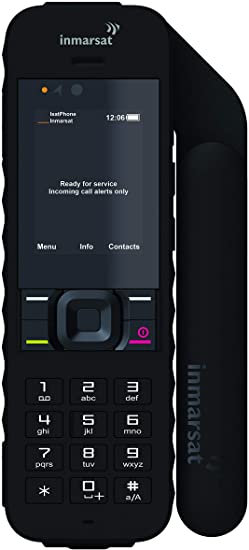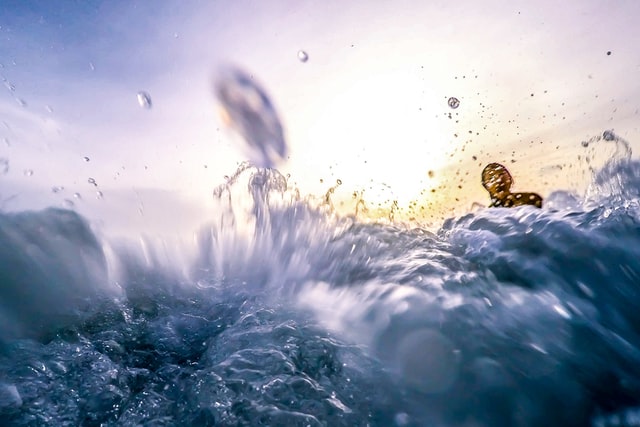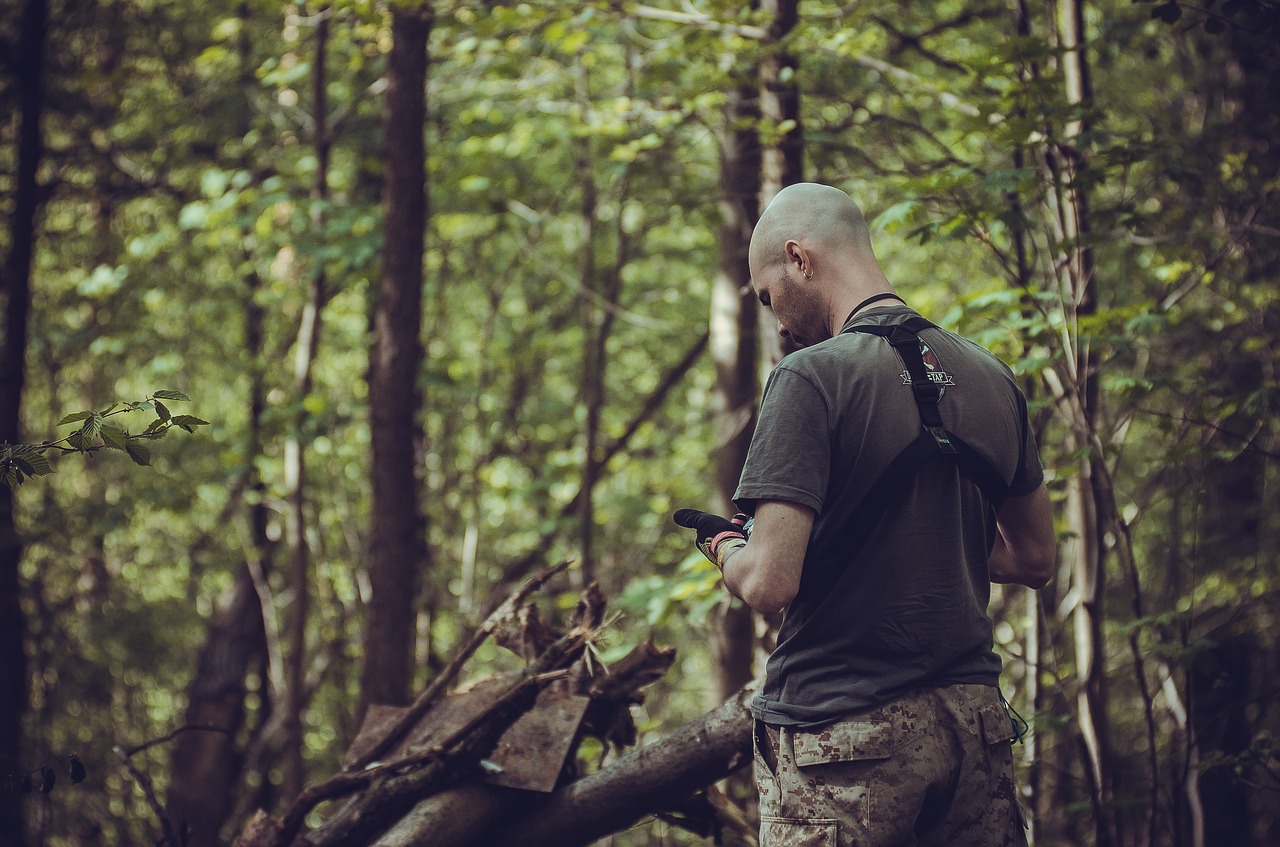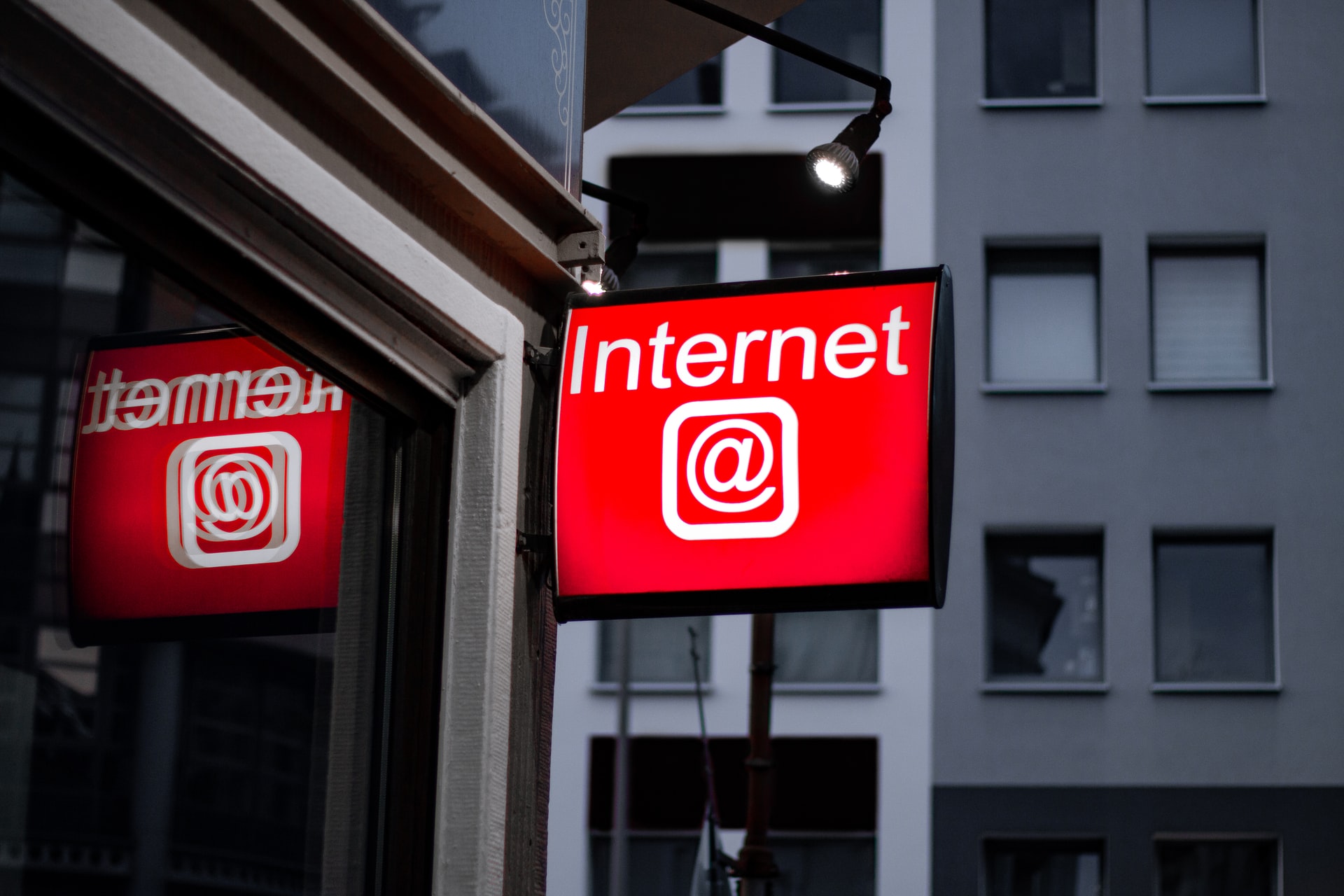Depending on where you are off to, packing for your next backpacking trip could consist of basic essentials to heavy-duty emergency devices. However, if you are headed out to more remote locations, a satellite phone is an essential piece of equipment to keep handy for your outdoor safety. Let’s dive right into the best ones for your next backpacking adventure.
The 5 Best Satellite Phones for Backpacking
1. Iridium Extreme 9575 (CPKTN1701)

If you are looking for extreme durability, nothing beats military-grade construction and materials. The Iridium Extreme phones are known to be the most robust design in the industry of satellite phones. This is especially useful if you intend to meander through rugged terrain.
With this satellite phone, you are able to send and receive SMS and emails and enjoy a talk time of up to 4 hours. The user interface is easy to use and the battery life is of the utmost importance when you are out in the wilderness, and this Iridium Extreme has enough juice to last up to 30 hours on standby.
Pros
- Best satellite phones for durability
- 2-way SMS and email
- Up to 4 hours of talk time
- Battery standby up to 30 hours
- Illuminated keypad
- Water-resistant
- Wide operating temperature range
Cons
- There may only be one SIM card in the package, not 2.
2. Inmarsat Isatphone 2

This satellite phone from Inmarsat comes ready to go, all it needs is your activation to get it working. The SIM card with these phones come included in your purchase and comes with a variety of contract options for you to use depending on the seller.
The Isatphone 2 phones offer global coverage and also allows GPS tracking to pinpoint your location anywhere in the world. You are also able to make and receive voice calls and text messages. Receiving calls and SMS on your Isatphone 2 will be of no extra cost to you as the sender incurs all the charges.
Pros
- Large and easy to store antenna
- Compact size not much larger than a cell phone
- The best coverage a satellite phone can offer
- Make and receive voice calls and SMS
- The kit comes with everything you need
- GPS location enabled
- Easy to set up
- 8 hours of talk time
Cons
- The antenna is a bit large
3. Iridium 9555 (BPKT0801)

The Iridium Extreme line of satellite phones is built to last. Only industrial-grade materials are used in the construction of these phones. They are also known to be easy to tote around due to their compact size just like this Iridium 9555. The best satellite phones are easy to use and aren’t bulky and can accompany you wherever you go without taking up too much space.
The interface of the Iridium 9555 is highly intuitive and straightforward to use for beginner and expert users. You can send and receive emails and SMS and read messages clearly on the LCD backlit display. Being in the great outdoors often requires the use of your hands. The handy headset and hands-free capability make this one of the best satellite phones for outdoor activities.
Pros
- Industrial-grade materials
- Robust construction and design
- Intuitive user interface
- One of the best choices for ruggedness
- Hands-free capabilities
- Send and get emails and SMS
- Backlit LCD display
Cons
- The internally stowed antenna needs to be pulled out for each use
4. Thuraya X5 Touch

Thuraya is one of the pioneers of creating a smartphone-like satellite phone. It possesses superior reception and signal detection with its omnidirectional satellite antenna. What’s amazing, and what many other satellite phones have trouble with is the walk-and-talk ability.
The Thuraya X5 smart satellite phone allows users a seamless experience when walking and using a satellite connection. Other than satellite connection, the device also supports 2G,3G, and 4G frequencies across the globe.
Pros
- Amazing smart-touch interface
- Omni-directional satellite antenna
- Seamless walk-and-talk ability
- Supports frequencies as most cell phones do
- Has dual SIM slots
- Fast connectivity
Cons
- As Thuraya products go, the coverage is limited.
5. Thuraya XT Lite

If you are looking for long-lasting battery life, the Thuraya XT-Lite satellite phone is unsurpassed. The lightweight yet sturdy device is compact and easy to carry with you everywhere. It even features dual a GSM function that improves communication.
Don’t worry if English isn’t your first language, the Thuraya XT Lite satellite phone has 12 programmable languages, making it easy for a lot of people to use. It’s similar to a cell phone in the sense that it supports speed dialing and a call history log.
Thuraya XT Lite has a rechargeable battery that offers the user 6 hours of talk time but up to 80 hours on standby!
Pros
- Long battery life
- Compact design and lightweight
- Dual GSM and easy to use interface
- 12 programmable languages
- Supports speed dialing and features call history logs
- Rechargeable battery
Cons
- The coverage is limited
Best Satellite Phone for Backpacking Buying Guide
You are often told to pack lightly when doing vigorous activity, and you want your satellite phone to fit into this definition. When you are backpacking, you usually carry more with you than you would on a regular day.
Your essentials include a water bottle, food, gear, and other tools so a lightweight satellite phone is your best bet. What features should you want on a satellite phone? Read on to find out!
Durability and Construction
Backpacking can be a strenuous activity, so you will definitely need a device that can withstand the strain. Not only that, but the construction also needs to be superior. First-rate construction would also ensure that your device is well sealed to keep out all the dust and moisture.
The Iridium Extremes such as the Iridium 9555 and the Iridium 9575 are great examples of highly-durable and highly-functional satellite phones.
Water-Resistant and Weatherproof
This category ties into the previous one about durability and construction. Your satellite phone needs to be able to operate in any type of weather. Lousy weather doesn’t stop those with a wanderlust heart, and it shouldn’t hinder the use of your satellite phones either.
The satellite phone you choose should be waterproof or at least splashproof to be practical. Some phones are even shockproof and made from industrial-grade materials and can go head to head with rocks and steep mountainsides in case you accidentally drop your device.

Portability
When you go backpacking, you are always on-the-go, so it only makes sense that you need something as portable as possible. The portability ties into the size and the weight of the satellite phones. Thankfully, most of the devices we have presented to you are made with light materials and their compact sizes make them easy to store.
Make sure you can easily take the device with you wherever you go without it weighing you down. Finding one that’s the right size to fit into the outer pocket of your backpack can also be useful when you need quick access.
Easy to Use
Nothing puts a user off like a difficult to operate the device. The main function of a satellite phone is to provide emergency means of communication. If you have a complicated device, you won’t be able to send text messages or calls as quickly as you would need to. This could result in the loss of precious response time. The best satellite phone won’t require too much learning on your part.
The Iridium Extremes, Inmarsat Isatphone, and ones from Thuraya are all straightforward and come with an intuitive user interface. Not only that, but if you have trouble or have questions at any time, these satellite phones all come with user manuals.
Screen and Keypad
The larger the screen the better (if it doesn’t make your device too bulky) and the best ones have a backlit screen to make it easy to use during times with low light. Full-color screens are also easier on the eyes and if you pair it with a light-up waterproof keyboard, then you will have the best satellite phone on your hands in terms of functionality.
Battery Life
You have a satellite phone because you need the means to reach out during emergencies. Most likely, you will be stranded somewhere without transportation indefinitely. In such a situation, one would hope that the battery life on your lifesaving device such as your satellite phone will last.
Battery life is of critical importance and should be one of the first things you look for in a satellite phone. The best ones give you plenty of talk time and can last for days on standby. The rule of thumb is to search for ones that offer a talk time of 4-8 hours and battery standby of at least 30 hours.

Network
For this section, we are going to touch upon the two largest and most reliable networks.
Iridium is a network with amazing coverage around the globe. While it could have trouble getting stable signals on high mountaintops or deep canyons, they are the only network that can reach either pole.
Inmarsat is a network that has been in operation for about 3 decades. They operate with LEO satellites that revolve around the equator, which produces very stable connections. It’s also worth mentioning that Inmarsat is by far the more affordable choice with dependable coverage.
You may have heard of Globalstar which is another satellite network, but they are still perfecting the technology and won’t always be able to offer stable connections. If you are operating a satellite phone, a stable network is one of the most important things to look for.
In general, going with a reputable network with years of experience and a stellar reputation such as Iridium or Inmarsat is your best bet. Also, if your satellite phone has a larger antenna such as the Inmarsat Isatphone 2, your reception may be clearer than one that doesn’t.
Coverage
We touched upon the network, now we are going to go deeper into the coverage. LEO satellites [1] offer coverage around the globe and have a steady signal (save for the two poles). They also sit closer to the earth (we’re talking about a mere 500-1000 miles above the surface) which also reduces latency.
Satellite phones that operate using LEO satellites have a faster connection and quick communication. The Iridium network operates on such a network.
MEO satellites are a bit higher, orbiting around 8000 miles high above the earth’s surface. Due to the higher altitude, there is a slightly longer signal lag for MEO satellites compared to the LEO. However, an MEO satellite can transmit data at high speeds.
The final option are GEO satellites. GEO satellites orbit high above the earth at an altitude of 22,300 miles and carry TV signals. These satellites are large and it only takes a few to cover the whole planet (this also means they give full coverage).
Price
Life is priceless, so the cost of a satellite phone shouldn’t be your first consideration. We do understand that they can be just as expensive as a higher-end smartphone with fewer capabilities, but they are indispensable when a less than ideal situation occurs.
A great way to figure out the best value for your money is to refer to all the points we presented above, and narrow down your choices to the best phone that meets your needs. From there you can find the right phone that is within your budget.
The majority of better built and higher-quality satellite phones will be priced on the higher end. Even if it is a few tiers above your budget, it will be well worth it in the face of desperation.

Extra Features
Extra features in your satellite phone may not be necessary (depending on your activity). If you are a lover of exploration and constantly like to seek out undiscovered areas then a GPS tracking feature might be needed. Isatphone 2 is a great example of satellite phones with GPS.
Some satellite phones also have Wi-Fi hotspots, data access, and emergency functions. Think about what you need and in what circumstances you will be using the satellite phone to figure out if you need these fancy bells and whistles.
The more capabilities satellite phones have, the more expensive they can be. Just to make sure you aren’t shelling out unnecessary cash, you need to first identify what is important to you.
How Much Does it Cost to Have a Satellite Phone?
Not only do you need to purchase the satellite phone itself, but you also need a plan and maybe even extra accessories. Antennas and batteries are two commonly purchased accessories for satellite phones. There are also other items such as carrying cases, chargers, docking stations, and more that you may want to spruce up your satellite phones.
These are all things to consider when thinking about the price. You need to take into account all of these extra purchases when deciding your budget. It will be on the more expensive side, so make sure you are ready to buy all the essentials.
What is the Cheapest Satellite Phone Service?
The big 3 (Iridium, Inmarsat and Globalstar) all offer cell phone service plans that will usually give you an international phone number. The pricing of these satellite phone plans depends greatly on what you choose. Do you want data? How long is the contract? Are there overage charges? These are all questions to ask before you can pinpoint the right plan for you.
What may be the cheapest plan that fits one person’s needs may not be the same for another. In order to find the cheapest satellite phone service for you, you need to first identify the purpose of your phone.
Which Satellite Phone is the Best?
Best is subjective, but there are a few factors that can make a satellite phone one of the best. You need to make sure it is lightweight. Carrying a phone that’s overly heavy will really weigh you down after hours.
The quality needs to be impeccable with sturdy construction and rugged materials. Definitely find one that is waterproof and dustproof and has battery life that is capable of giving at least 4-8 hours of talk time and upwards of 30 hours on standby.
You also definitely want a device that provides stable and wide network coverage. All of these factors contribute to the best satellite phones. Anything else you may read about or want are extra features you can consider as a bonus.
Conclusion
Backpacking can be a relatively dangerous activity depending on your location, so you must make sure the satellite phones you bring with you can save your life if the situation calls for it. Satellite phones were made to take over where your regular cell phone fails and offer seamless communication whether it be via text messages, call time, or even data transmissions.
Coverage from these devices should also span the entire planet if possible, to further guarantee your safety during your next outdoor trek into the wilderness and other secluded areas. If you are stuck, our list of best products should help point you in the right direction.










Comments